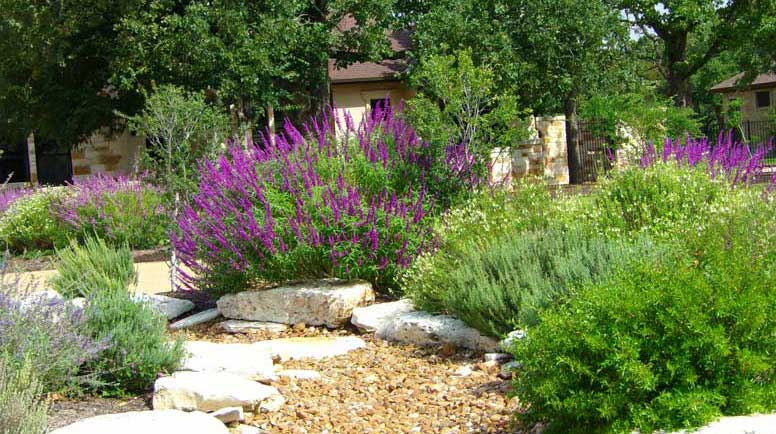DESIGNING A LOW WATER USE YARD
Explore the options for a beautiful, water-friendly landscape
For trusted expertise and superior results,
find a landscape professional near you.

Creating a space in your yard that attracts birds and butterflies is not only visually appealing, but also beneficial to the environment. Birds, especially hummingbirds, and butterflies are important in the flower-pollination process, and inviting them into your yard helps to ensure that flowering plants continue to thrive.
Hummingbirds and butterflies gravitate toward flowers rich in nectar, so consider planting flowers like:
Some shrubs also have nectar-rich flowers, such as:
Seed-eating birds prefer bright annuals, like:
And perennials, such as:
When planting your nectar-rich flowers and shrubs, make sure to place them in the sun. Nectar-source plants should receive full sun from mid-morning to mid-afternoon. Also consider planting for continuous bloom, meaning when one plant stops blooming, another begins, so birds and butterflies have a constant source of food.
While nectar-rich flowers and shrubs are important, don’t forget about the importance of native plants. Choose plants native to your specific area, and not only will they thrive in your yard, but they’re the most naturally suitable for native wildlife. Once established, native plants require little water and little maintenance. Because they are perennial, most native plants return year after year, making them one less thing you need to think about.
In addition to plants, consider installing water features, such as bird baths and small ponds. Make birdbaths butterfly-friendly by creating places where butterflies can easily perch, such as a few rocks above water level. Any shallow, waterproof container—a glazed plant saucer or rock with a natural depression—will work if the center is no more than three inches deep. Even fountains and ponds can be made more accessible by placing rocks or branches near the water's edge. For installation of fountains and ponds, consider hiring a landscape professional who specializes in hardscape installation, so you can be sure the job is done properly.
There are seemingly endless options to creating pollinator friendly gardens. Have fun experimenting with various flowers and shrubs to see what birds and butterflies may pay you a visit.
Photo courtesy of ABC Home and Commercial Services.
We recently updated our Privacy Policy. By continuing to use this website, you acknowledge that our revised Privacy Policy applies.